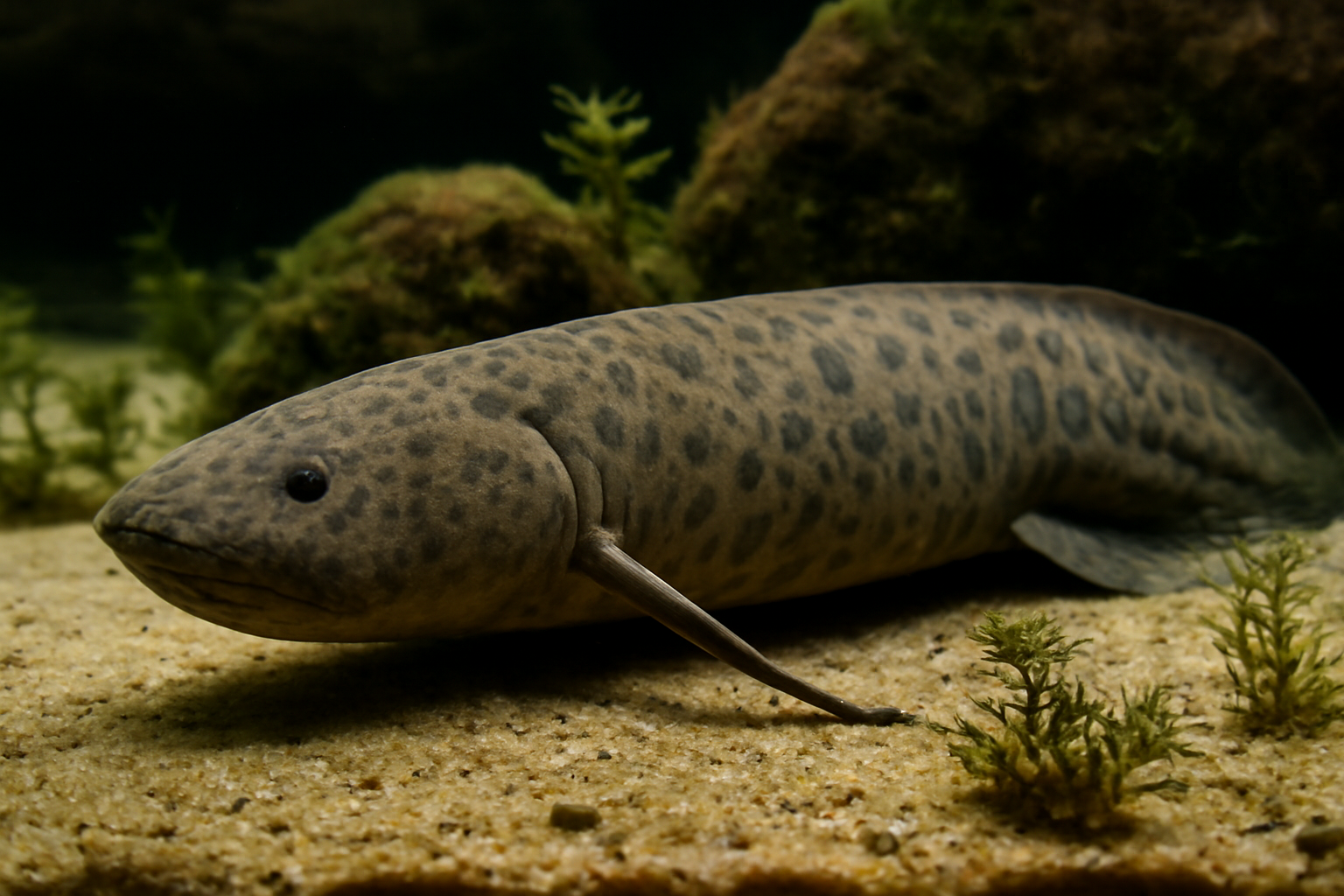South American Lungfish [Lepidosiren paradoxa]

Description
The South American lungfish, also known as the Amazonian lungfish, is a type of lungfish native to the Amazon Basin. It is a nocturnal predator that feeds on small fish and crustaceans. This species is unique for its ability to breathe air, which allows it to survive in stagnant water and mud during the dry season. It can reach up to 125 cm in length and has a long, slender body with four paddle-shaped limbs. Its coloration varies from olive to brown, with a pale underbelly. It's known for its ability to produce a cocoon in which it can aestivate during dry periods, breathing air through a built-in 'snorkel'.
Taxonomy
| Phylum |
Chordates
Chordata
|
|---|---|
| Class |
Lobe-Fin Fish
Sarcopterygii
|
| Order |
Lungfishes
Dipnoi
|
| Family |
South American Lungfishes
Lepidosirenidae
|
| Genus |
South American Lungfish
Lepidosiren
|